
Humanity is grappling with global warming, abnormal climate patterns, various natural disasters and a food shortage. There is a newly coined term that can effectively pinpoint the cause behind all these man-made disasters. That is Anthropocene. The Anthropocene is the name of a proposed new geological age, reflecting the profound impact that human activities have had on the Earth, leaving significant traces. To raise awareness about the environmental crisis, Producer Choi Pyeong-soon has been creating environmental documentaries. The CBT reporter interviewed PD Choi who visited CBNU for a lecture on Nov. 19 to better understand environmental problems through the lens of the Anthropocene.
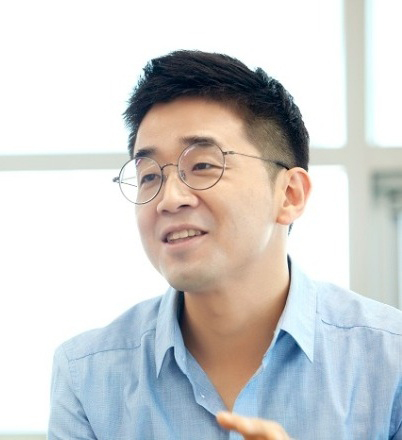
Q1. Please introduce yourself.
Hello. I am Choi Pyeong-soon. I work at EBS creating environment programs as an environmental producer. Recently, I am on a program called PD Log. Also, I have been creating environmental documentaries and books like Anthropocene: The Human Epoch, The Time We Have Left.
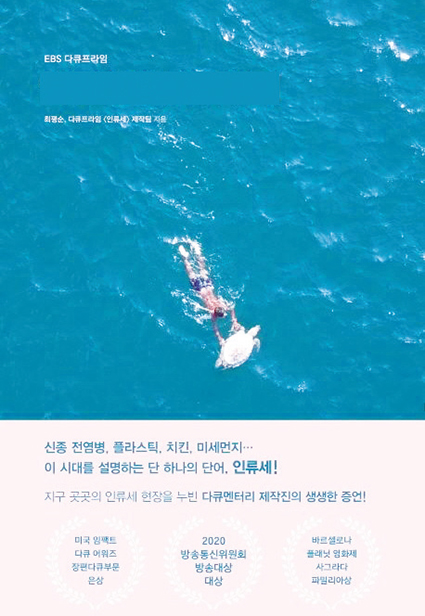
Q2. You currently produced various books and documentaries about the environment. What led you to become an environmental producer?
I was interested in environmental problems since I was in university. As a school of communication & media student aspiring to become a producer, I created content such as People Who Use Tumblers, People Who Do Not Use a Disposable Cup. While creating content related to environmental issues, I realized that these problems extend beyond individuals. Since then, I have been deeply engaged with environmental issues. I was intrigued by the connection between the problems in my life and problems of the whole society and country, so I decided to become an environmental documentary PD from then on.
Q3. Please explain about the Anthropocene that you dealt with in this lecture.
The Anthropocene is a new term that is proposed as the new geological age. It is not an official term yet. Originally, the geological age changes with every mass extinction. Additionally, it is named based on discovered fossils at that time. Anthropocene is the term used to describe how human activities are having an effect on the Earth on a scale comparable to a mass volcano eruption and asteroid impacts, and the fact that the 6th mass extinction is being caused by human activities at a pace comparable to them. It effectively demonstrates the connection between human impact and environmental destruction. Since it illustrates the links that the climate crisis and ecosystem destruction cannot fully express, it is widely used around the world.
Q4. Why is the Anthropocene, that is the emergence of the new geological age, important?
The 6th mass extinction is being driven by human activities which work as power and the global environment has been changed too much due to human activities. Due to the immense power of these activities, they are shaking the foundations of the Earth’s system, prompting the proposal of a new geological age called the Anthropocene. This idea is not just the view of a single person; many others support and agree with this argument. Understanding the Anthropocene is crucial because recognizing human influence on the planet can spark greater interest in addressing environmental problems and finding solutions.
Q5. How do human traces that support the Anthropocene remain?
Plastic waste is one of the representative pieces of evidences of the Anthropocene. Consider the vast amounts of plastic debris polluting both oceans and land. There are plastic rocks and even fossils which are formed by plastic trash. The Great Pacific Garbage Path (GPGP), which is known as plastic trash island, is also a good example.
Another surprising evidence of the Anthropocene is chicken bones. One may think that human bones should be the dominant remnant of the age of the Anthropocene, but disposed chicken bones far outnumber human bones. From this moment on, an estimated 66 billion chickens are slaughtered a year. Thus, chicken bones far outnumber human bones. In addition, the chickens of the 2010s have bones that are twice as large as their predecessors from the 1950. Humans have been having an effect on a variety of species like chickens making them bigger to make it easier to eat and causing them to lay more eggs. Therefore, chicken bones can be one of the pieces of evidence of the Anthropocene.
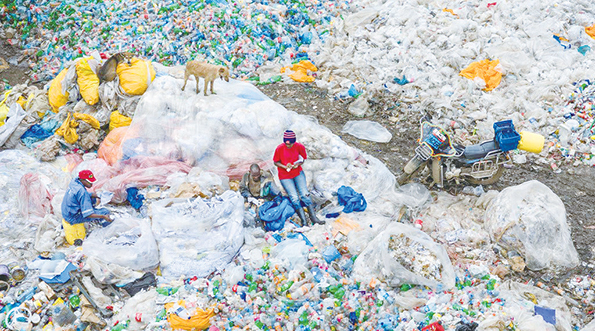
Q6. You went to cover environmental issues around the world while producing works related to the Anthropocene. What were memorable environmental issues or catastrophes? Also, what did you feel on the spot?
I covered the Australian bushfire scene that occurred from Sept. 2019 to Mar. 2020. At that time, countless animals and plants were destroyed. Especially, kangaroos and koalas, which are the representative animals in Australia, suffered more. Many koalas died due to their slow movement. When I went there for on-site coverage, I saw a lot of dead koala bodies and animals suffering from burns. The surviving kangaroos were starving with no grass to eat, and I cannot forget the figures of animals limping due to burns on their legs. I felt really sad.
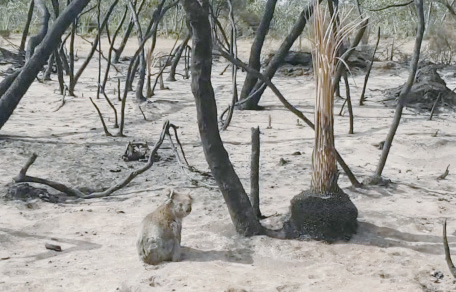
Q7. I also recently learned about the Anthropocene. What do you think the level of awareness of environmental issues, including the Anthropocene, in Korea?
The recognition of the environmental issues is very low. Koreans are interested in plastic straw issue at least, so they use paper straws as well. However, Cafe, which use plastic straws, are increasing as customer’s interest dwindles. On the contrary, Korea’s waste recycling rate is high. Actually, less than 30% of plastics are recycled, though. It is unfortunate that many people are unaware of the other side that recycling is not working well despite the high rate of recycling.
Q8. What kind of changes will humans, who live in the Anthropocene, confront in the future? Furthermore, what is the most important action to protect against such future changes?
I do not think it would be too bleak, but the future might be significantly worse than the present. Human happiness will grow decrease. For example, hosting an outdoor elementary school field day was taken for granted when I was young. However, most activities are currently hosted indoors rather than outdoors, and this trend is likely to increase in the future. I anticipate that as the climate crisis worsens, we will live in hotter and more uncomfortable conditions, which could lead to a higher mortality rate. For instance, we might only have yellow apples to eat instead of red ones. While we previously had choices, we may find ourselves limited to a single option, such as yellow apples. Such limitations are expected to become more common.
Of course, the farmed crops will be changed in accordance with climate change, but natural disasters will increase more and more. To delay or prevent these changes, an international energy transition is the most important thing. I think that international agreement and implementation about how to reduce the percentage of usage of coal, oil, gas, and nuclear energy which are used to produce electricity and how to regulate that pace are important.
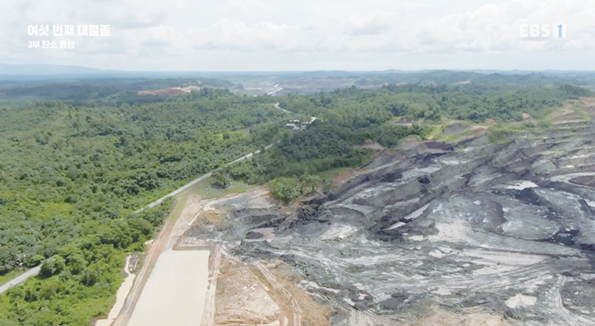
▲ This mine was constructed by destroying indonesiaʼs forest.
Q9. Lastly, what would you like to say to the readers?
Unless we take a sincere interest in the Earth’s crisis, we will ultimately be the ones who suffer. As we went through the heat wave this year, climate issues eventually return to haunt to us. Recognizing the risks of a rapidly changing climate and coming up with countermeasures are the first step that changes our bleak future. Only your interest can drive corporations and governments to adopt more sustainable policies like releasing unlabeled products as people’s interest increases. Thus, I hope readers will pay more attention and consider environmental issues more than they do now.
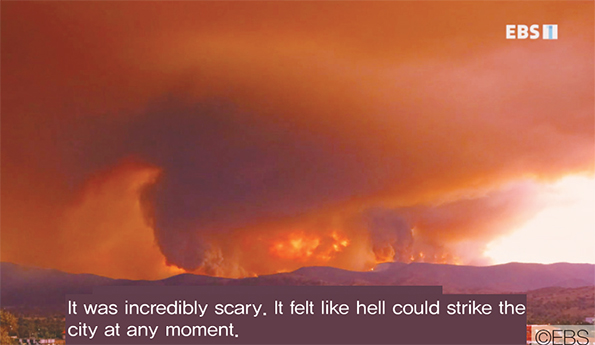
▲ This is a photo of the 2019-2020 Australian bushfires.
By Lee Seo-young
seoyeongi619@chungbuk.ac.kr


 All
All People
People






 Lee Seo-young
Lee Seo-young











